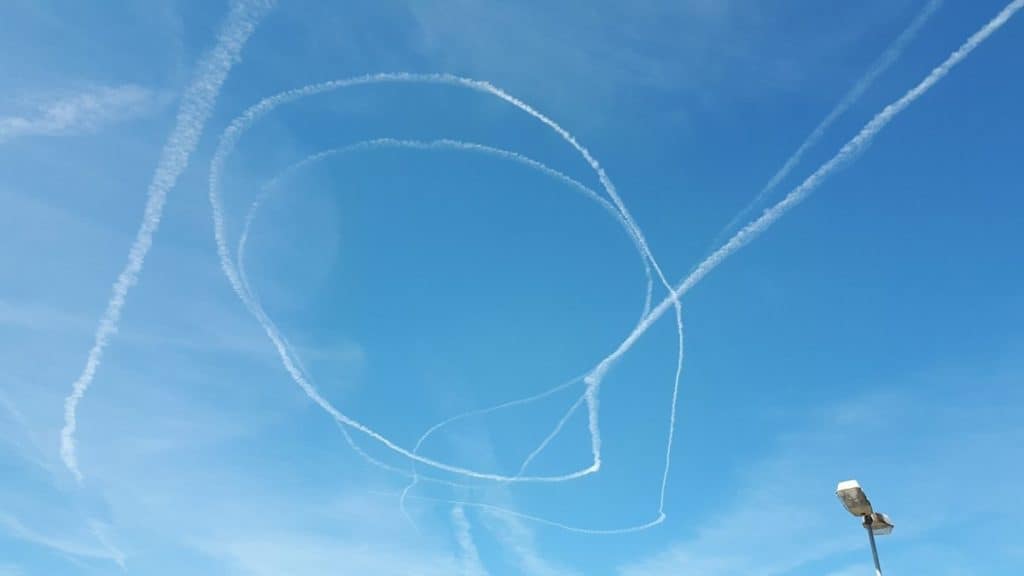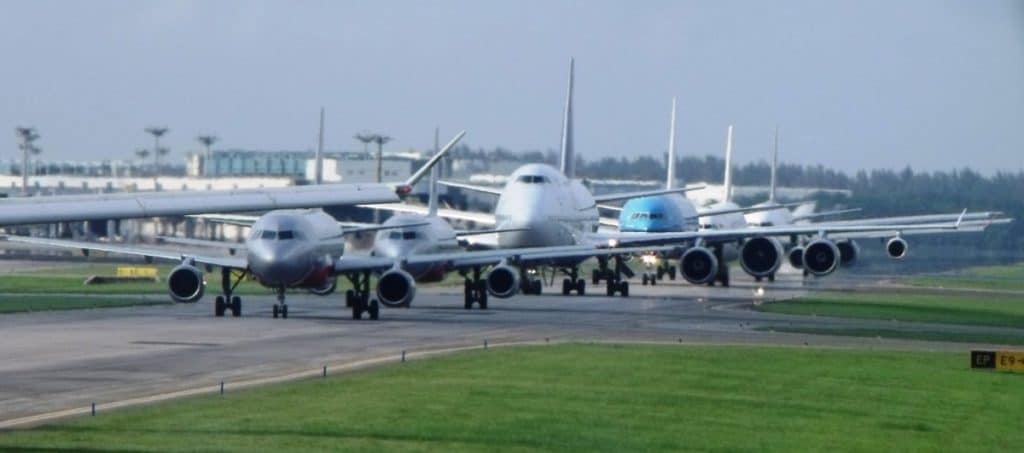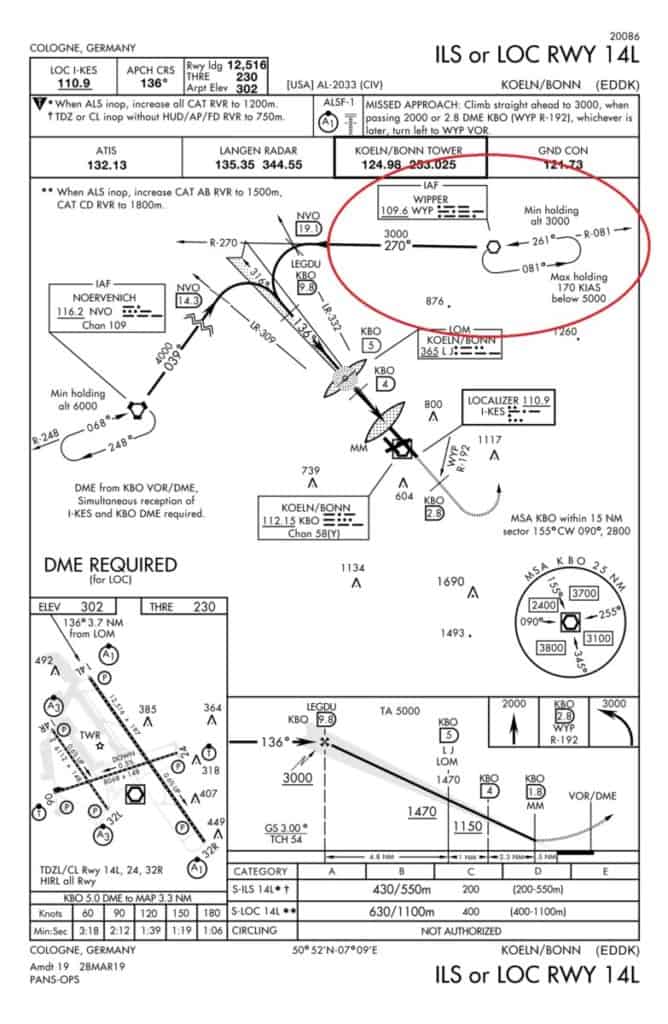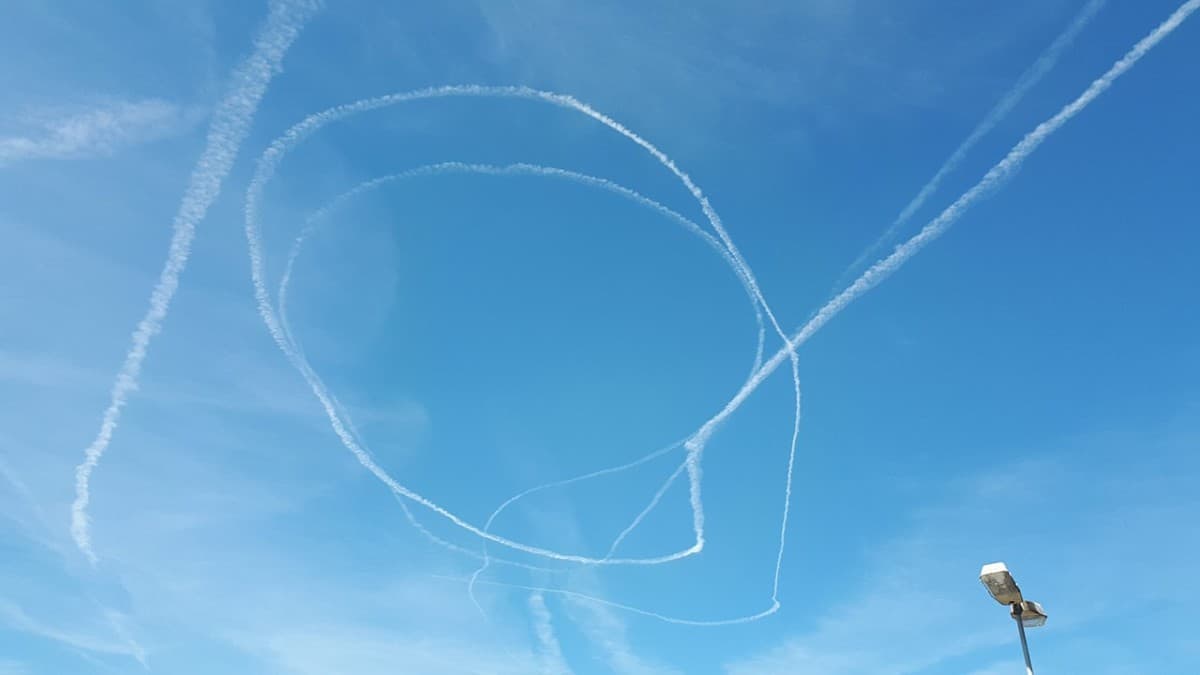
You may have been on an airplane and the Captain has advised everyone to prepare for arrival only to then have the aircraft seem to fly in circles. To the unknowing, this can seem like a huge waste of time, especially after a long flight. But there are many reasons why an airplane would seem to fly in circles for no apparent reason.
Airplanes may fly in circles at the discretion of the pilot or by request from air traffic control. Most circling is to provide separation between airplanes, to hold planes when runways are temporarily obstructed, or to ensure airplanes arrive at their planned arrival times for the destination airport.
So let’s have a look at why some flights circle and some don’t. If you have never noticed, you might do it on your next flight after reading this and you will then understand why.
Aircraft may fly in a circle or a ‘Race Track’ style pattern and here are the most common reasons why:
1. Aircraft Spacing
As airplanes fly from point A to point B they will be navigating along highways in the sky. This allows air traffic control a much easier task of keeping track of everyone. Along that route or airway, the air traffic controller could have several planes all following the same path behind one another.
As we have seen on the highways, when one of the front runners slows down it creates a bunching of all the other cars behind, and hopefully no collisions. The same happens in the air.
By law, air traffic controllers have to maintain set separation distances both horizontally and vertically between each aircraft under their control. If a delay occurs at the destination airport that requires no landings for 10 minutes for example, then the air traffic controllers have to slow down or delay the approach of every aircraft planning to land at that airport in the next 10-15 minutes.
Air traffic controllers can ask the pilots to reduce their speed, but there will come a time when they are unable to slow down enough and remain flying. It is at this point when the pilots may be ordered to complete a 360° orbit or stay orbiting over a set location to maintain the distance between the aircraft ahead of it.
Learn More…
Try These Articles:
* Helicopters Flying In Circles – Why Do They Do That?
* Why Do Airplanes Fly in a Curve?
2. Arriving On Time
All aircraft will be issued an arrival time window that the pilots and air traffic control must aim to hit when beginning the approach to a busy airport. This could be due to the airport being shut overnight and having dozens of aircraft approaching from inbound overnight flights ready for the opening time, or to allow for traffic flow control into very busy airports.

When airplanes are making good time during their cruise portion, again air traffic controllers can ask the pilots to reduce their speed or they can be placed into a ‘Holding Pattern’ (more on this later) to eat up the time to ensure they arrive at their approach window on time.
Arriving too early or too late not only causes extra work for the air traffic controllers but can lead to fines for the airlines if these windows are frequently missed.

Join My Newsletter & Get Great Tips, Information and Experiences To Help You Become a Superb Pilot!
3. Dealing With Aircraft Issues
From time to time, pilots will have to deal with mechanical or technical issues with their airplane. This can be something simple like a popping circuit breaker to something extreme like the landing gear not locking down into place.
When approaching an airport to land, rather than being rushed and distracted, pilots can ask air traffic control to be placed into a ‘Hold’ or ‘Holding Pattern’ to allow them time to focus on dealing with the issue without the stress of being directed by ATC (Air Traffic Control).
ATC will give the pilot instructions for the holding pattern they wish the aircraft to fly to ensure they stay in the required location and at the required altitude. This makes the job of traffic separation a lot easier for the air traffic controller while the pilots are busy.
Once the pilots have resolved the issue and are ready to continue their approach to land they will advise ATC who will then slot them back into the traffic flow.
Learn More…
Try These Articles:
* How Do Airplanes Not Freeze In Flight?
* How Long Do Airplanes Last?
4. Airport Delays
Busy airports are bound to have delays from time to time which prevents aircraft from landing. These can range from debris on the runway, flocks of birds, dangerous crosswinds and wind shear, visibility below landing weather minimums, violent thunderstorm cells, or a stricken aircraft.
If these delays are fairly short in duration the air traffic controllers can stick the aircraft inbound for landing in a Hold. If there are many aircraft, they can hold them at multiple GPS waypoints and stack them at various altitudes, similar to a multi-story parkade.
If there are going to be significant delays then airplanes may get diverted to other airports close by. As you can imagine, this is most inconvenient for the passengers so placing the aircraft in a Hold is the preferred method – Until fuel starts to get low!
5. Returning To Land
If an airplane develops a mechanical or technical issue soon after takeoff it makes sense for the pilots to turn around and bring the airplane back to the airport. The big problem is that most large commercial airliners can take off heavier than they are allowed to land.
The reason for this is that landing places huge stress on the landing gear but taking off is quite gentle. Because of this the airplane can take off fully loaded and is usually a lot lighter on fuel by the time it has to land.
When an airplane needs to return to its departure airport the pilots need to reduce its weight to under its Maximum Landing Weight and the only way to do that is by reducing the fuel onboard. There are two ways in which this is done:
- Dumping fuel out of the wing – This is used only in an absolute emergency due to the perceived environmental impact. Truth is, the fuel evaporates into the atmosphere, providing the airplane is high enough!
- By flying around in a Holding Pattern and burning off the required weight of fuel.
Once there has been enough fuel offloaded the pilots will be able to begin their approach and land the airplane safely
What Are Air Traffic Control (ATC) Holds or Holding Patterns?
Aircraft holding patterns are a maneuver flown by the pilots or the aircraft’s autopilot to keep the aircraft in a designated area of airspace with the intent of causing a delay. Holds are commonly flown in a clockwise racetrack pattern with each leg being around 1-2 minutes depending on the aircraft speed.
Holds at airports can be published on the approach information publication for pilots or they can be issued on an as-needed basis by ATC. If a Hold is published, the pilot is to follow the printed directions on the publication. If ATC needs to assign an aircraft a Hold they will do so in the following way:
The airspace above our heads is laid out using GPS waypoints and each waypoint and navigation beacons. When ATC requires an aircraft to enter a Hold they will issue the following information known as a “Holding Clearance”. It will be issued in a set format so no information is misunderstood:
- The direction from the GPS waypoint or Beacon – (N, NE, E, SE, etc)
- The name of the GPS waypoint or Beacon to Hold at – Known as the ‘Fix’
- The bearing, heading, or radial on which the aircraft is to fly toward the Fix
- The altitude to fly at
- The leg length in miles or minutes
- Clockwise or Anti-clockwise direction to run while in the Hold
- Time to expect a further clearance (If radio contact is lost with ATC the pilots can depart the Hold and proceed on course/approach to land at this time)
Here you can see a published Hold in the Red Circle:
- Holding East of the Fix
- Fix is WIPPER
- Heading 261° TO the Fix
- Minimum Holding Altitude is 3000ft or as assigned by ATC
- Leg Length will be dependent on altitude and airspeed
- Anticlockwise Direction
- ATC will issue an EFC – Expect Further Clearance Time

If you appear to be making regular turns in the same direction every 1-2 minutes then you will be in a Hold. Have a look out of your window as there is a good possibility you may see other aircraft at varying altitudes in the same Hold location as you.
As soon as it is safe for the aircraft to continue ATC will cancel the Hold and the pilots can resume their journey.


